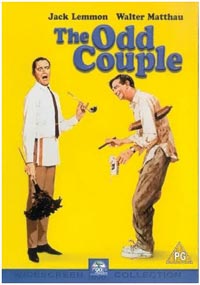The famous 1960s Broadway play and then film The Odd Couplebrought together the fastidious Felix (Jack Lemmon) and slovenly Oscar (Walter Matthau) in a famous portrayal of mismatched roommates trying to live together in a New York apartment. The hilarious result showed that opposites can mix but expect plenty of chaos along the way.
Odd couples are remarkable. We have all done a double take upon spying a very tall person arm-in-arm with their very short partner. The height difference, while nothing to do with the couple's affection for each other, just looks plain odd.
 |
|---|
Recent months have thrown up a fresh batch of odd airline couples for the industry to ogle: British Airways/Iberia; United Airlines/US Airways; Southwest/WestJet; AirAsia/Jetstar; and American Airlines/JetBlue.
The Dating Game
So what is behind this flurry of activity? At the heavyweight end of the industry some partnerships are simply about achieving scale to remain on a par with the leaders. Those leaders are Lufthansa, with annual group revenues of $36 billion, Air France-KLM, close behind with revenues of $33 billion and Delta Air Lines with $28 billion. If the BA/Iberia coupling is consummated, and the formal merger agreement was signed in early April, a $23 billion entity will be created. A United/US Airways combo would create a $32 billion player.
Such mega regional groups are just the first step. The next is the politically less palatable ability for cross-border mergers. Rational industry thinkers like United's chief executive Glenn Tilton can be forgiven for sounding like broken records on the subject of ownership. But he is unrepentant about pressing on with the message.
"There is serial economic failure of the participants in this business," says Tilton. With 180 airline bankruptcies since US deregulation in 1978 alone, it is clear, he states, that "the economic model doesn't workthat's a tremendous amount of value destruction."
As well as advocating change, Tilton is realistic. Like many others he seeks the next best thing: "Absent of the ability to merge across borders, we have resorted to the only other means of meeting the market need for global reach - and alliances have become the foundation of international travel."
While it can easily be argued that United and US Airways is an odd couple, with that merger seen as a seriously second-best option to United's preferred partner in Continental Airlines, some network carriers are turning to low-cost players as well. The first odd couple here was Star Alliance's Lufthansa making a surprising swoop to take a 19% stake in JetBlue. Already this deal is two years old.
Attraction
Intriguingly, JetBlue has another budding network carrier relationship, this time with oneworld founder American Airlines. They have signed a simple interlining deal centred on New York JFK and Boston and a slot swap at New York and Washington Reagan National. But is this only the first step towards stronger links and even a oneworld relationship for JetBlue?
|
|---|
JetBlue has a 42% market share at slot-constrained JFK, making it an attractive partner for other oneworld members. Lufthansa was similarly attracted to JetBlue to enable it to boost its New York presence. The question is whether JetBlue can retain a relationship with both as time goes on?
The local market power of JetBlue at New York and Boston, Brazil's Gol and Canada's WestJet place them squarely on the alliance radar for network carriers seeking to tap their networks. Gol has been signing lots of codeshares with a variety of network players, while WestJet is toying with a tie-up with Delta Air Lines as a mooted codeshare deal with Southwest Airlines has lost steam. Other low-cost players with attractive local networks include Australia's Virgin Blue, Malaysia's AirAsia and Europe's easyJet. Expect more deals between the old and the new airline worlds many involving all of above.
The Odd Couple was about two opposites that learned to co-exist. Over the next few years legacy and low-cost carrier relationships will not only be fascinating to watch, but potentially strategically critical in the absence of substantial cross-border equity ties.
Source: Airline Business



















